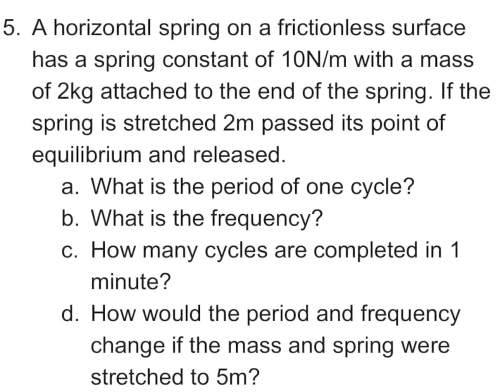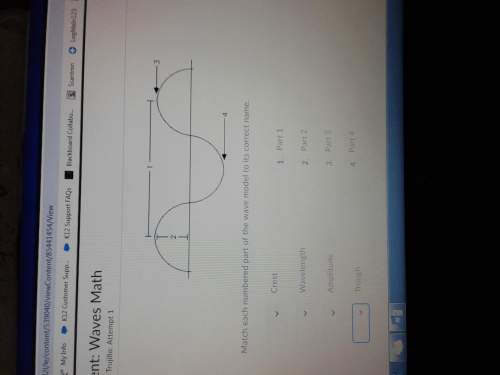
Physics, 07.02.2021 23:30 cynayapartlow88
A projectile is fired at 0=355.0 m/s at an angle of =64.2∘ with respect to the horizontal.
The parabolic path of a projectile over a horizontal surface is shown. The projectile is launched at the left side of the figure with a launch velocity vector labeled V 0 pointing upward and to the right. The launch angle is marked with the Greek letter theta and an arrow indicating the angle is measured counterclockwise from the horizontal surface. The parabolic path of the projectile shows that the projectile lands at a vertical height equal to the height from which it was launched and that the projectile travels a horizontal distance labeled R.
Assuming no air resistance, what is the range of the projectile?

Answers: 2


Another question on Physics

Physics, 21.06.2019 17:30
Acatapult is tested by roman legionnaires. they tabulate the results in a papyrus and 2000 years later the archaeological team reads (distances translated into modern units): range = 0.4 km; angle of launch = π/5 rad; landing height = launch height. what is the initial velocity of launch of the boulders if air resistance is negligible?
Answers: 3

Physics, 21.06.2019 22:30
Laboratory experiments, observational field studies, and model-building are all examples of different forms of scientific investigations. in what way do laboratory experiments primarily differ from other forms of scientific investigations? a. a laboratory experiment is the only accepted form of investigation within the scientific community. b. studies about how things behave in nature or studies involving very large objects are best answered through laboratory experiments. c. laboratory experiments involve the identification and control of variables. d. data can only be generated through laboratory experiments, not other forms of investigation.
Answers: 3

Physics, 22.06.2019 06:20
Clothing made of several thin layers of fabric with trapped air in between, often called ski clothing, is commonly used in cold climates because it is light, fashionable, and a very effective thermal insulator. so it is no surprise that such clothing has largely replaced thickand heavy old-fashioned coats. (a) consider a jacket made of five layers of 0.1-mm-thick synthetic fabric (k = 0.13 w/m·°c) with 1.5-mm-thick air space (k = 0.026 w/m·°c) between the layers. assuming the inner surface temperature of the jacket to be 28°c and the surface area to be 1.25 m2, determine the rate of heat loss through the jacket when the temperature of the outdoors is 0°c and the heat transfer coefficient at the outer surface is 25 w/m2·°c. (b) what would your response be if the jacket is made of a single layer of 0.5-mm-thick synthetic fabric? what should be the thickness of a wool fabric (k = 0.035 w/m·°c) if the person is to achieve the same level of thermal comfort wearing a thick wool coat instead of a five-layer ski jacket?
Answers: 1

Physics, 22.06.2019 06:30
At very high pressures, gases become and will eventually a) more dense; become hotter b) more dense; change to a liquid or solid c) less dense; combust d) less dense; turn into a liquid
Answers: 1
You know the right answer?
A projectile is fired at 0=355.0 m/s at an angle of =64.2∘ with respect to the horizontal.
The para...
Questions

Mathematics, 12.10.2020 01:01

Mathematics, 12.10.2020 01:01


Mathematics, 12.10.2020 01:01

French, 12.10.2020 01:01

Mathematics, 12.10.2020 01:01

Mathematics, 12.10.2020 01:01




Mathematics, 12.10.2020 01:01

Computers and Technology, 12.10.2020 01:01


Social Studies, 12.10.2020 01:01


Mathematics, 12.10.2020 01:01








